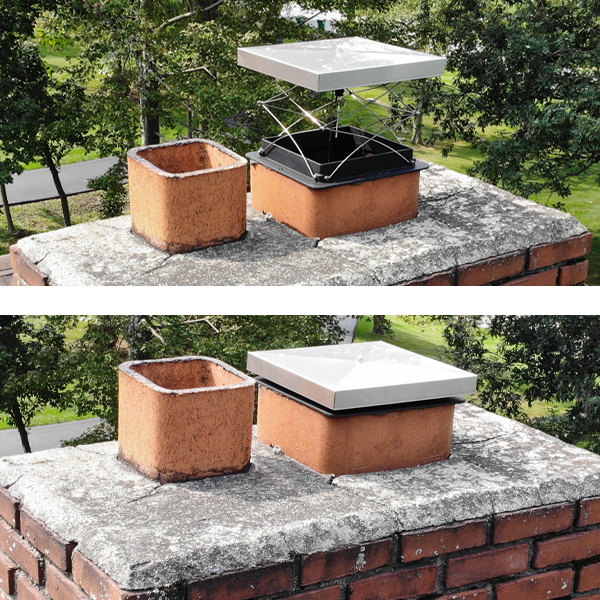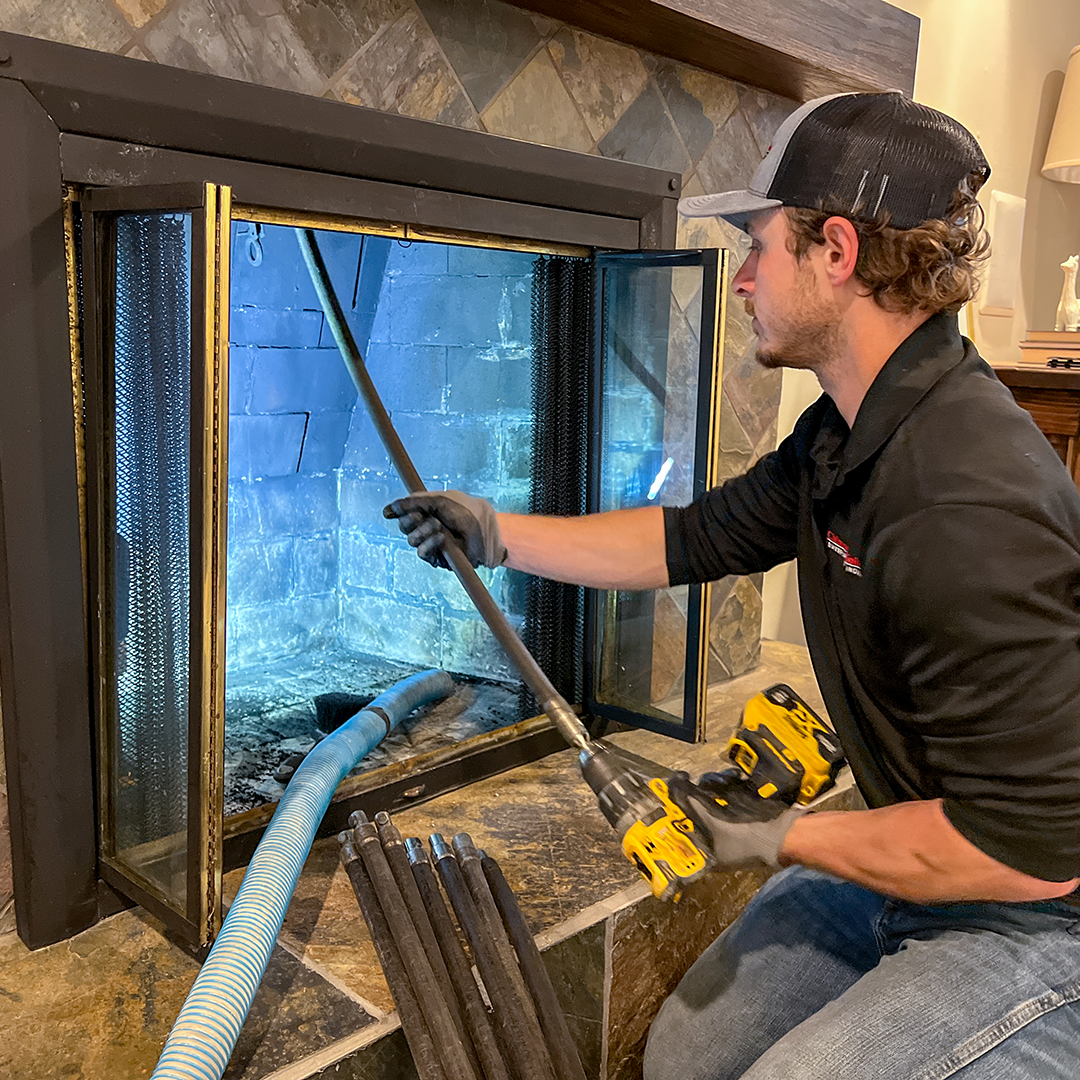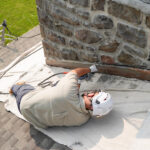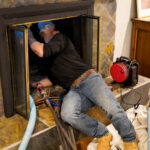Are You Using Your Chimney Damper Correctly?
Most overlook their chimney dampers. But they’re a critical piece to your fireplace/chimney system that helps with safety and efficiency. This blog post covers what a chimney damper does, how to use it properly, and signs it may need to be replaced.
 What is a Chimney Damper?
What is a Chimney Damper?
A chimney damper is a metal plate inside the chimney, sometimes at the base or the top of the flue. It regulates airflow and controls smoke, ensuring your fireplace operates safely and efficiently.
When you’re not using the fireplace, the damper should be closed to prevent heat from escaping or cold air from getting in. On the flip side, when you’ve lit a fire, open the damper fully to allow smoke and harmful gases like carbon monoxide to escape. In short, the damper is essential for:
- Maintaining energy efficiency by sealing the chimney when you’re not using it.
- Allowing proper ventilation when using the fireplace.
- Keeping drafts, debris, and small animals out of the house.
Using the Damper Properly
Correct damper usage is pretty straightforward, but a mistake can put you at risk.
Before Lighting a Fire: Check that the damper is fully open. You can look up the flue with a flashlight or feel for airflow.
During a Fire: Keep the damper open when the fire’s burning to allow smoke and gases to exit the house.
When Not in Use: Keep the damper closed when not using the fireplace. This prevents heat loss and keeps outside air from entering.
Signs Your Chimney Damper Might Be Broken
As a mechanical component, it’s easy for the damper to wear out and malfunction. This can lead to serious problems, like higher energy bills or a fire hazard. Here are the most common signs that your damper needs to be fixed or replaced.
Difficulty Opening or Closing: If the damper feels stuck, it could be warped, rusted, or obstructed.
Drafts or Temperature Fluctuations: If you notice cold drafts near the fireplace, it could mean the damper’s not sealing properly.
Persistent Smoke Issues: If the room fills with smoke when using the fireplace, the damper may not open fully or be misaligned.
Visible Damage: Most dampers are metal, so look for cracks, rust, or warping and replace the damper if necessary.
Unwanted Odors: Damaged dampers can allow moisture to get in, creating a breeding ground for mold and mildew.
How to Keep the Damper Working Reliably
Maintenance is key to keeping the damper, fireplace, and chimney in good shape. Follow these tips.
Schedule Regular Inspections
Get the chimney inspected at least once a year by a certified chimney technician. They’ll check for damper issues and other problems that could affect performance or safety.
 Clean the Chimney
Clean the Chimney
Creosote buildup, soot, and debris can obstruct or damage the damper. Regular cleaning by a professional chimney sweep prevents these issues and ensures the system is safe.
Lubricate Moving Parts
If the damper has a hinge, lubricate it occasionally to prevent rust and make it open and close smoothly.
Fix Damage Promptly
You must fix cracks, rust, or alignment issues immediately. Delaying repairs can worsen the problem and lead to an expensive replacement.
If you haven’t had a professional chimney and fireplace inspection in a while, now is the perfect time to schedule one. Call Chimney Solutions in Indiana today. Our certified technicians provide services such as cleaning, inspections, masonry repairs, waterproofing, chimney cap installation, and more.




